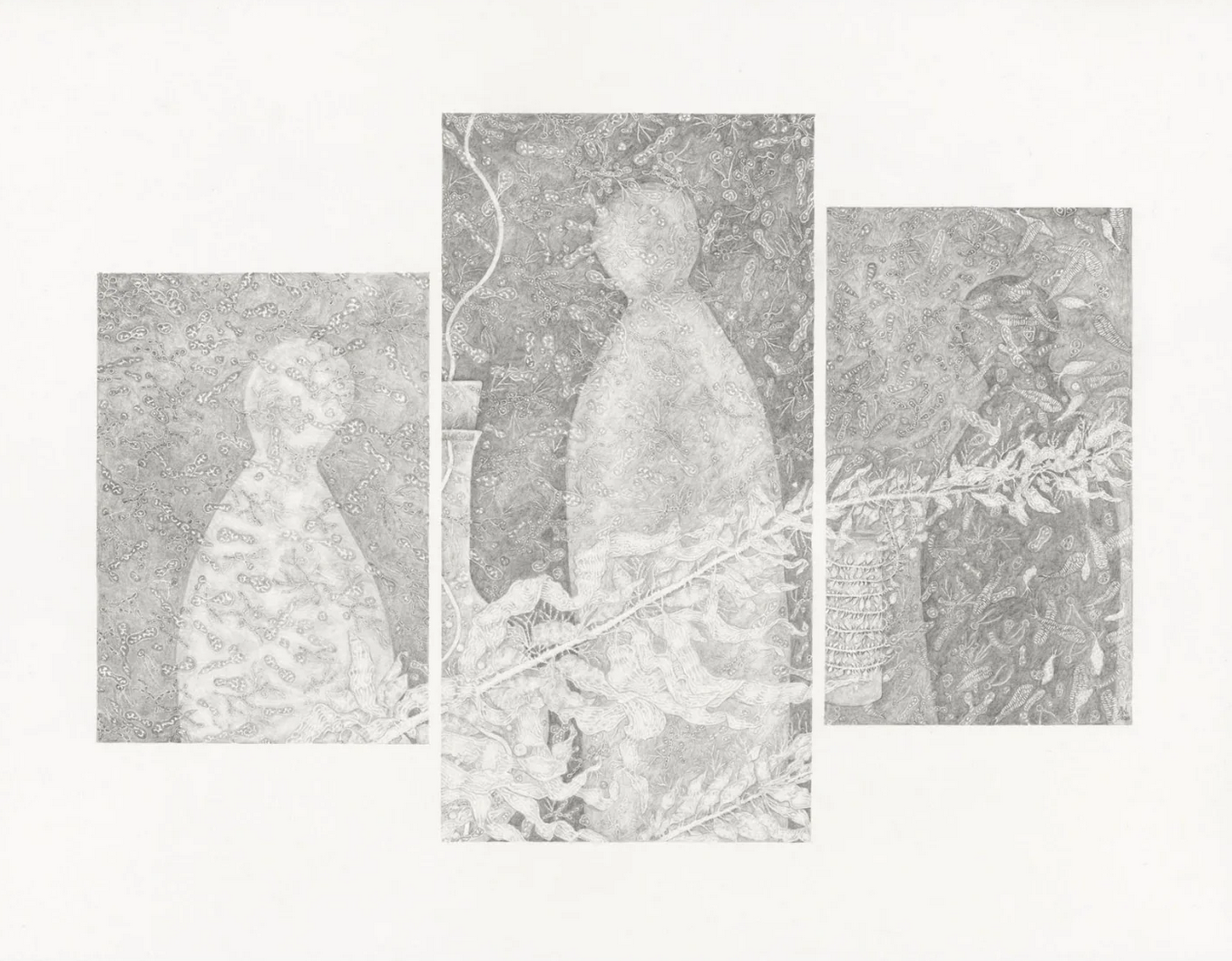Amanda Walker
Amanda Walker 'Seedbank #2' Mariculture Giant kelp Macrocystis pyrifera (endangered)
Amanda Walker 'Seedbank #2' Mariculture Giant kelp Macrocystis pyrifera (endangered)
Couldn't load pickup availability
Share
Seedbank #2 Mariculture
Giant kelp Macrocystis pyrifera (endangered)
Original graphite drawing on Arches paper
$1200
Limited Edition Print
1/5, 2/5, 3/5, 4/5, 5/5
Archival Premium Print on cotton rag paper
Unframed 380mm W x 290mm H
$310
Offshore Giant kelp mariculture
Giant kelp is grown on lines suspended from modified aquaculture rings, the grow lines run parallel to the water surface at a depth of ~5 or 10m or grown on 60m grow lines at a depth of ~10m. The current research trial at Tinderbox is designed to test seaweed species, mainly M. pyrifera for potential off - shore (deep ocean) farming.
The project goals are to develop technologies, select kelp genotypes that cope with ocean warming, and assess the performance and potential impacts to kelp production
systems and economic viability.
Funded by Blue Economy CRC Partnered by: UTAS-IMAS and Australian Maritime College Climate Foundation, CSIRO, Huon Aquaculture, Southern Ocean Carbon Company, Tasmanian
Government, University of Queensland and University of Queensland, Deloitte
Amanda Walker’s work primarily consists of drawing and photography, creating multi-layered works that interweave a narrative of an emerging landscape with history, duration and geological time. Her actions of repetition and layering respond to fragments of experiences brought together to recall or suggest our movement within the landscape.
Amanda completed a Bachelor of Fine Arts, Deans Roll of Excellence with Honours at the University of Tasmania 2012. Her most recent exhibition was in collaboration with scientists from the Institute of Marine and Antarctic Studies, Tasmania. Directly responding to their research helped her to understand that there are limits to our knowledge, and as habitat and species are lost forever, monitoring, measuring, preservation and protection are critical to survival. Through her work, Amanda continues to seek to understand the connections that emerge between the vulnerability of the landscape and our connectedness with nature.


